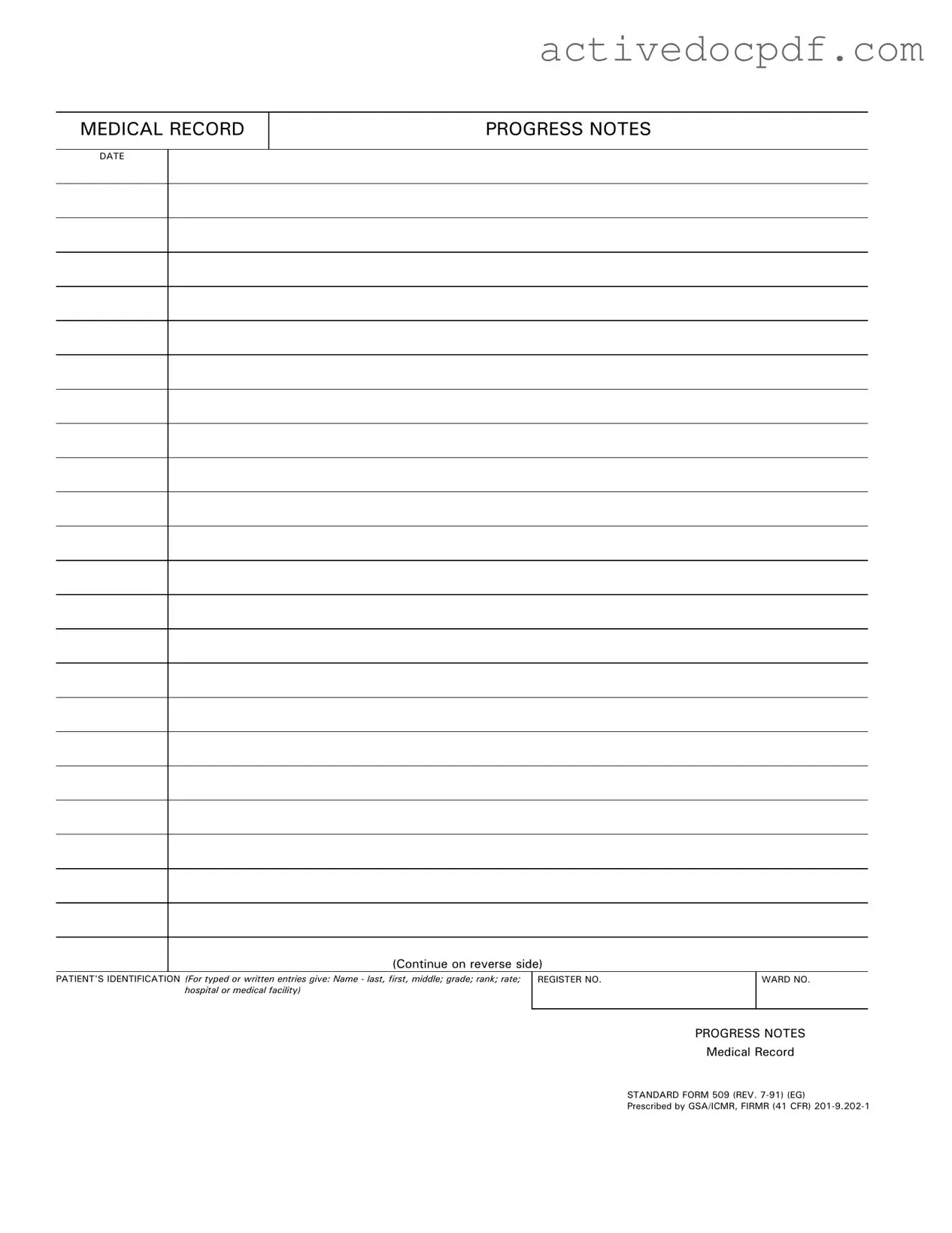The Progress Notes form is used to document a patient's ongoing medical care. It helps healthcare providers keep track of a patient's condition, treatment, and any changes over time. This form is essential for maintaining accurate medical records.
Healthcare providers, including doctors, nurses, and therapists, are responsible for filling out the Progress Notes form. They should record their observations and any treatment provided during each patient visit.
The form requires several key pieces of information, including:
-
Patient's name (last, first, middle)
-
Patient's grade, rank, or rate
-
Hospital or medical facility name
-
Patient's identification number
-
Ward number
-
Date of the entry
All this information helps ensure that the notes are correctly attributed to the right patient and visit.
The Progress Notes form should be completed during each patient visit or encounter. This ensures that all relevant information is recorded consistently and accurately over time.
While there is no strict format, notes should be clear and concise. Providers should focus on documenting the patient's condition, treatment provided, and any changes observed. Using standard abbreviations and medical terminology can help maintain clarity.
If the form does not provide enough space for detailed notes, providers can continue writing on the reverse side of the form. Alternatively, they may attach additional sheets if necessary. It is important to ensure that all relevant information is recorded.
The Progress Notes form plays a crucial role in patient care. It allows healthcare providers to communicate effectively about a patient's condition and treatment. Other providers can review these notes to understand the patient's history and make informed decisions about future care.
Yes, Progress Notes forms are considered confidential medical records. They should be stored securely and only shared with authorized personnel involved in the patient's care. Maintaining confidentiality is essential for protecting patient privacy.
If an error occurs, it should be corrected promptly. The provider should draw a line through the mistake, write the correct information, and initial the change. This method maintains a clear record of what was originally written while ensuring accuracy in the notes.
